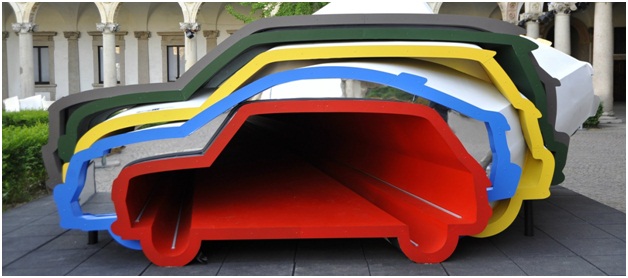The Future of Windshield Replacement: Innovations, Eco-Friendly Materials, and Smart Technologies
The automotive industry is hurtling toward a future marked by unprecedented innovation, sustainability, and integration of smart technologies. Within this transformation, the realm of windshield replacement emerges as a focal point. In this comprehensive exploration, we delve into the future of windshield replacement, uncovering groundbreaking innovations, the integration of eco-friendly materials, and the infusion of smart technologies. From the intricacies of side window repair & replacement to the crucial role of ADAS calibration, join us on a journey to discover the exciting developments shaping the future of auto glass.
- Introduction
The windshield, once a passive shield against the elements, is undergoing a metamorphosis. Beyond its fundamental role in vehicle safety, it is evolving into a dynamic hub of technology and sustainability. This guide aims to unravel the intricate tapestry of innovations driving the future of windshield replacement.
- Innovations in Windshield Replacement Technologies
As vehicles become more advanced, the technologies used in windshield replacement are also evolving to meet higher standards of efficiency and durability.
Advanced Glass Composites
Innovative glass composites are revolutionizing windshield durability and weight. By combining strength and lightness, these composites enhance overall vehicle safety and contribute to improved fuel efficiency.
Augmented Reality (AR) Windshields
AR windshields are not just a concept from science fiction; they are becoming a reality. These windshields overlay real-time information onto the glass, providing drivers with crucial data like navigation prompts and safety alerts without diverting their attention from the road.
Self-Healing Windshields
Imagine a windshield that can repair minor damages on its own. Self-healing windshields, crafted from advanced materials, are emerging as a sustainable solution. This innovation not only reduces the need for frequent replacements but also minimizes environmental waste.
- Eco-Friendly Materials in Windshield Replacement
The automotive industry is under increasing pressure to adopt eco-friendly practices, and windshield replacement is no exception.
Recyclable Windshield Glass
In an effort to reduce environmental impact, manufacturers are exploring glass compositions that are easily recyclable. This shift aligns with a broader push toward sustainability in manufacturing processes.
Bio-Based Polymers for Molding
The use of bio-based polymers in molding components of windshields is gaining traction. Derived from renewable sources, these polymers offer a greener alternative to traditional manufacturing materials, contributing to a more sustainable supply chain.
- Smart Technologies in Windshield Replacement
The integration of smart technologies is not limited to the vehicle’s internal systems; it extends to the windshield, transforming it into a multifunctional interface.
Intelligent Heads-Up Displays (HUD)
Heads-Up Displays have evolved into intelligent systems that project critical information directly onto the windshield. From speed and navigation to real-time traffic data, these HUDs enhance the driving experience by keeping drivers informed without distractions.
Connectivity and Integration with Smart Vehicles
Windshields are becoming integral to the connectivity of smart vehicles. By integrating with the vehicle’s smart systems, windshields contribute to enhanced safety and performance, playing a central role in the communication network of the vehicle.
- The Role of ADAS Calibration in Windshield Replacement
With the prevalence of Advanced Driver Assistance Systems (ADAS), recalibrating these systems after windshield replacement is crucial for optimal functionality.
Precision Calibration for Sensor Alignment
ADAS relies on sensors and cameras integrated into the windshield. Precision calibration ensures these sensors are accurately aligned, preserving the effectiveness of features like lane departure warnings and automatic emergency braking.
Post-Replacement Dynamic Calibration
Dynamic calibration becomes increasingly important as vehicles age. Post-replacement dynamic calibration adapts ADAS to changes in the vehicle’s condition, ensuring ongoing accuracy.
- Benefits of Embracing Future Windshield Replacement Trends
Understanding the innovations, materials, and technologies shaping the future of windshield replacement comes with a myriad of benefits for both consumers and the environment.
Enhanced Safety and Durability
Advanced glass composites and self-healing technologies contribute to safer and more durable windshields, reducing the likelihood of damage and the need for frequent replacements.
Environmental Responsibility
The use of recyclable materials and bio-based polymers aligns windshield replacement practices with environmental sustainability goals, reducing the industry’s carbon footprint.
Smart Driving Experience
Smart technologies in windshields enhance the overall driving experience, providing real-time information and contributing to the development of autonomous driving systems.
- Conclusion
The future of windshield replacement is an intersection of innovation, sustainability, and intelligence. From self-healing glass to intelligent heads-up displays, every aspect is geared toward enhancing safety, minimizing environmental impact, and embracing the connected future of transportation. As consumers look to the horizon, the road ahead promises windshields that not only protect but also enrich the driving experience in ways previously unimaginable.
FAQs
Can self-healing windshields completely eliminate the need for replacements?
While self-healing windshields can repair minor damages, extensive or severe damage may still require replacements for optimal safety.
How does ADAS calibration contribute to safety in windshield replacements?
ADAS calibration ensures that safety features reliant on sensors and cameras are accurately aligned, preserving their effectiveness after windshield replacements.
Are eco-friendly materials more expensive in windshield manufacturing?
While the initial costs may vary, the long-term benefits of using eco-friendly materials, such as recyclable glass and bio-based polymers, often contribute to a more sustainable and cost-effective solution.
What information can intelligent Heads-Up Displays (HUDs) project on windshields?
HUDs can project various information, including speed, navigation prompts, and real-time traffic data, providing a convenient and safer driving experience.
How often should ADAS calibration be performed after windshield replacement?
Post-replacement dynamic calibration is recommended, especially as the vehicle ages, to adapt ADAS to changing conditions and ensure ongoing accuracy.



